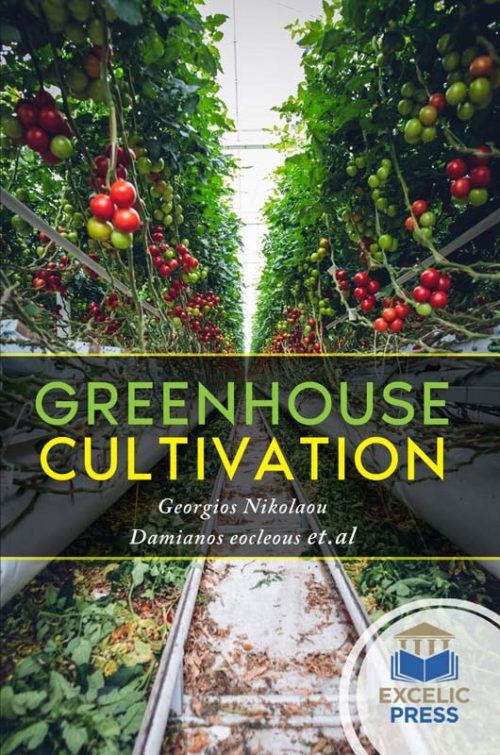Description
Greenhouse technology allows farmers to grow many kinds of crops in regions and seasons of adverse climatic conditions which bring high profit. It also allows people to enjoy almost any fruit or vegetable at the local market at any time regardless of whether the food is out of season. Globally, buildings are responsible for approximately 40% of the total world annual energy consumption. Most of this energy is for the provision of lighting, heating, cooling, and air conditioning. Increasing awareness of the environmental impact of CO2 and NOx emissions and CFCs triggered a renewed interest in environmentally friendly cooling, and heating technologies. However, exploitation of renewable energy in buildings and agricultural greenhouses can, also, significantly contribute towards reducing dependency on fossil fuels Precision agricultural greenhouse systems indicate considerable scope for improvement of irrigation management practices since growers typically irrigate crops based on their personal experience. Soil-based greenhouse crop irrigation management requires estimation on a daily basis, whereas soilless systems must be estimated on an hourly or even shorter interval schedule. Therefore, promoting innovative renewable applications and reinforcing the renewable energy market will contribute to the preservation of the ecosystem by reducing emissions at local and global levels. This will also contribute to the amelioration of environmental conditions by replacing conventional fuels with renewable energies that produce no air pollution or greenhouse gases.
This book covers current research and developments in more efficient climate control and root development to optimize their use in greenhouse cultivation. This book describes various designs of low energy greenhouses. It also outlines the effect of dense urban building nature on energy consumption and its contribution to climate change. Measures, which would help to save energy in greenhouses, are also presented. It also enabled the minimization of temperature variation and, hence avoided the hazard of any sudden climatic change inside the greenhouse. Recently, plant-based monitoring or plant reflectance-derived indices have been developed, yet their potential is limited for estimating the irrigation rate in order to apply proper irrigation scheduling. Optimization of irrigation practices imposes different irrigation approaches, based on prevailing greenhouse environments, considering plant-water-soil relationships.
This book presents a comprehensive review of the literature, which deals with irrigation scheduling approaches applied for soil and soilless greenhouse production systems. Further, it explores the ubiquitous environment control system, and a review on the effects of biochar on container substrate properties and growth of plants is presented. Additionally, the book reviews factors influencing the microclimate of the greenhouse and the latest technology for regulating the microclimate of the greenhouse, in particular, the cooling and heating techniques. The book concludes with a study to assess the effect of both cultivar and conventional versus organic management on leek yield, quality, antioxidant content and elemental composition of leek grown in greenhouses. The processes covered in this book, such as crop growth, energy balance, and mass exchange, applied to any type of greenhouse.





